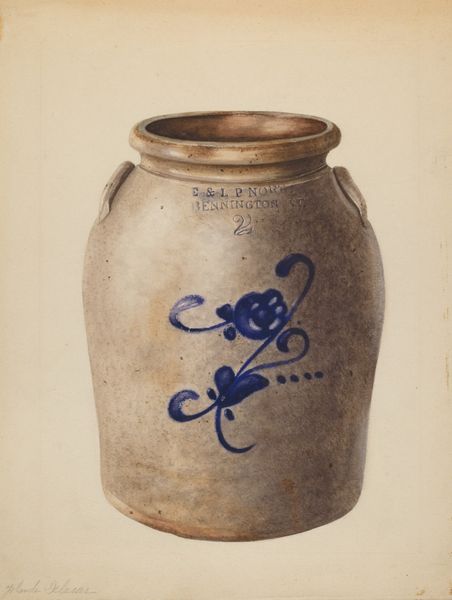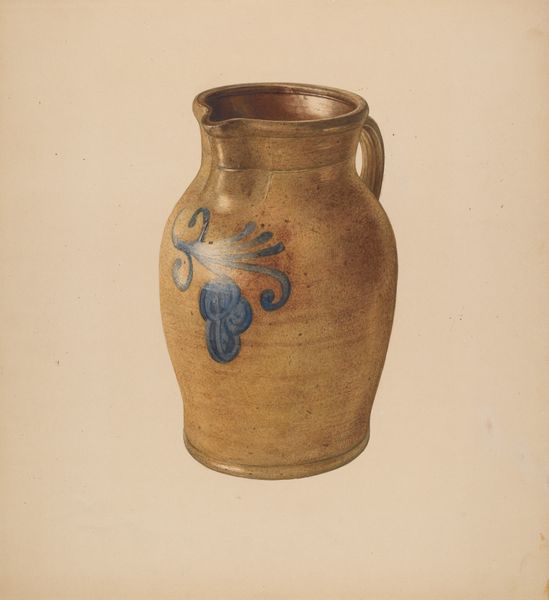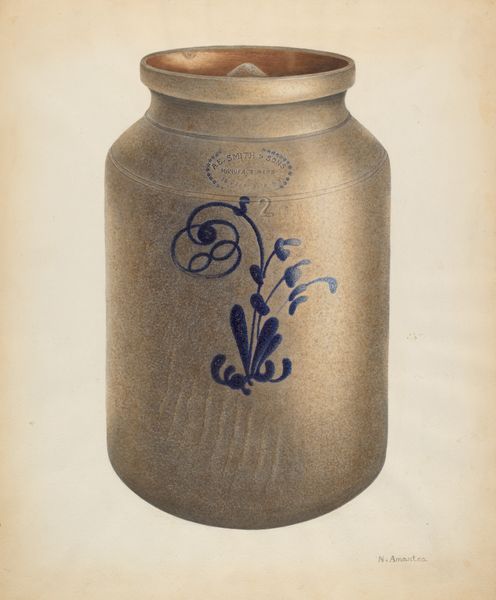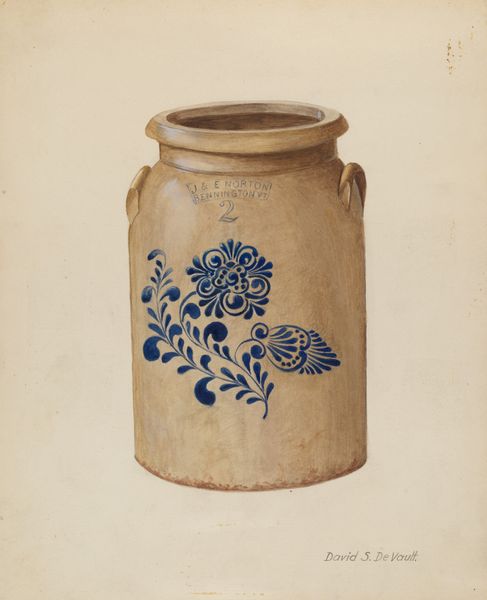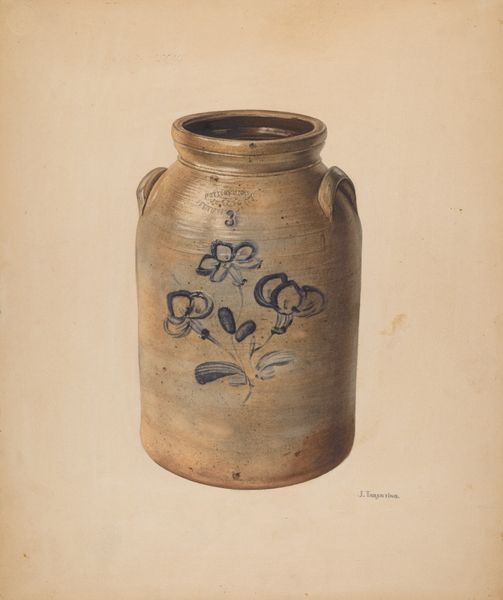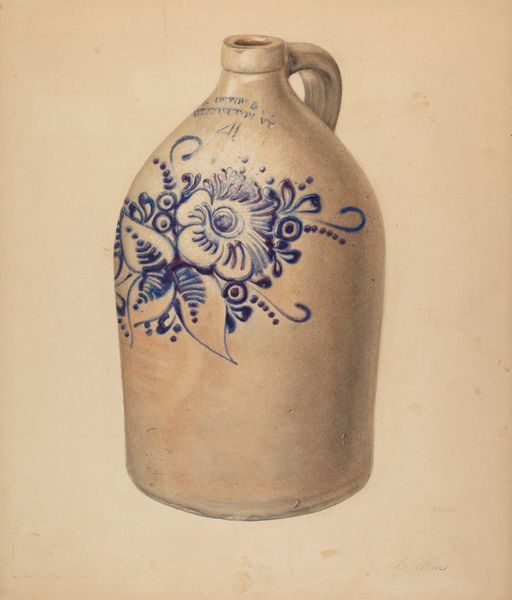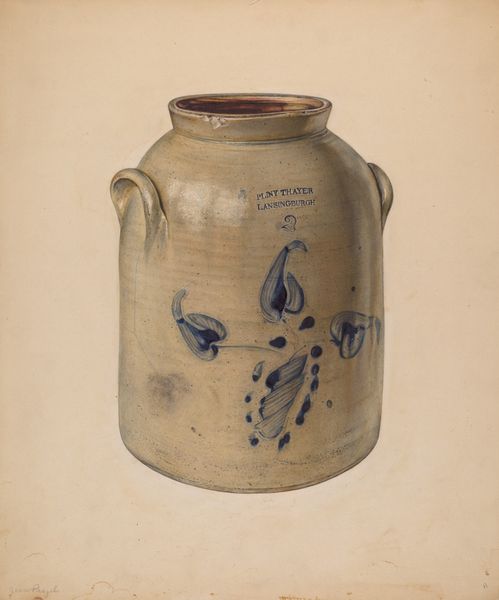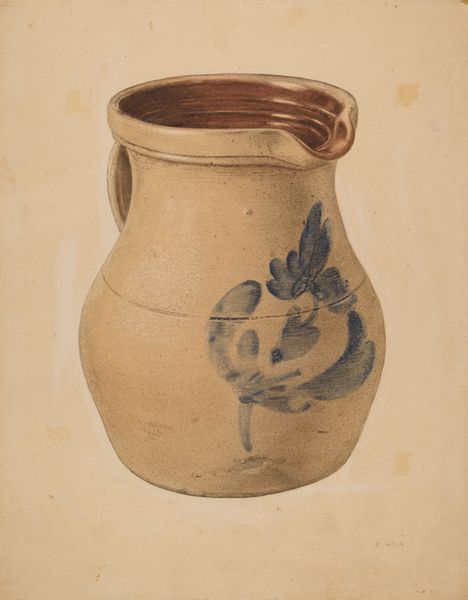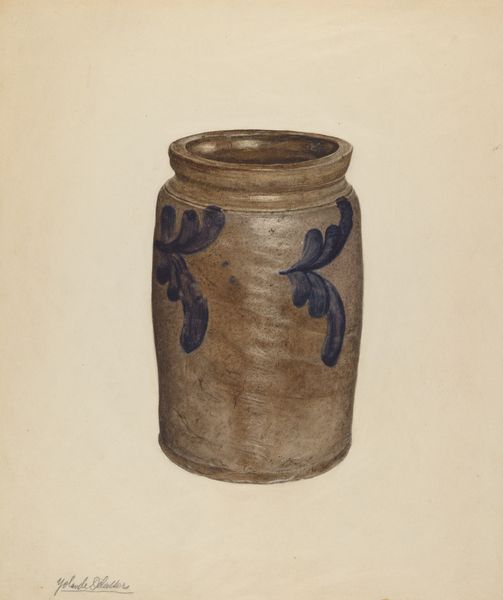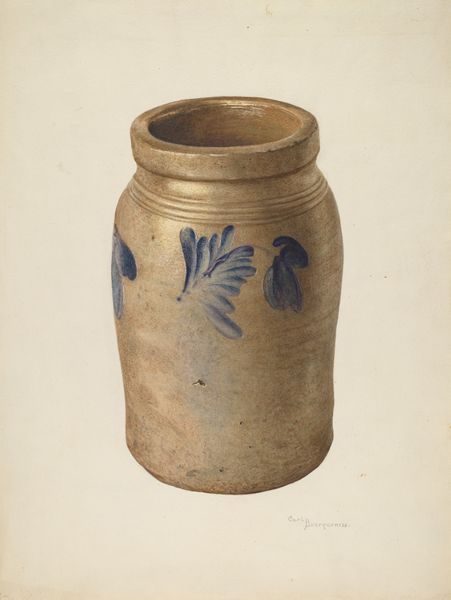
drawing, ceramic, watercolor
#
drawing
#
water colours
#
ceramic
#
watercolor
#
ceramic
#
regionalism
#
watercolor
Dimensions: overall: 36.1 x 29 cm (14 3/16 x 11 7/16 in.) Original IAD Object: 10 1/4" High 5 1/2" Dia.(top)
Copyright: National Gallery of Art: CC0 1.0
Curator: Before us, we have "Jar," a watercolor created around 1940 by Dorothy Dwin. It showcases a seemingly simple, functional object rendered with care. What’s your first impression? Editor: My immediate response is that there’s a rustic beauty here, almost a humble monumentality. The color palette is restrained – mostly earthy browns punctuated by these almost cobalt blue floral accents. It's unassuming but also quite arresting. Curator: Dwin painted during a period where artists explored distinctly American themes, finding artistic merit in everyday subjects. Think about Regionalism and the glorification of ordinary life. How might this jar be symbolic of that movement? Editor: Precisely. We could see the jar as an embodiment of American resilience, especially given that this was painted during the tail end of the Depression era. Its robust, simple design speaks to a time of scarcity, but also of ingenuity and making do with what you have. This might celebrate the objects and lives of the working class. Curator: Considering the artist’s context, this jar gains a lot more significance. Dwin, while perhaps not as widely known today, was an active participant in the art scene of her time, documenting a particular visual vernacular. The ceramic jar is placed deliberately in this painting, giving her subject both value and aesthetic presence. Editor: And the flower motif feels equally deliberate. This subtle use of blue injects a needed breath of optimism. The rendering suggests the jar might be used for preserving foods; a reminder that better times might be on the horizon. What do you make of Dwin’s watercolor technique? It doesn't feel especially polished, almost like she’s mimicking the rough texture of the ceramic itself. Curator: Yes, it has this charming directness. The texture Dwin achieves reminds us of the inherent imperfections of handmade pottery. Her work is concerned less with technical virtuosity and more about highlighting the unassuming dignity of everyday objects. And maybe, in a quiet way, suggesting a different standard of beauty altogether. Editor: I concur completely. It also makes me consider the tradition of still life painting through history and question the absence of similar imagery of the quotidian lives of women. The deliberate choice of subject, in itself, has quiet subversive qualities. Curator: Seeing through the lens of the domestic helps reveal the cultural work it’s doing. Hopefully listeners today have gained a fuller sense of why art historians like to look beyond its seemingly humble qualities and celebrate pieces like this. Editor: I definitely agree. It shows us that the artistic gesture resides as much in the choice of subject as in the rendering of it. These ostensibly "simple" artworks become surprisingly resonant once you engage with them thoughtfully.
Comments
No comments
Be the first to comment and join the conversation on the ultimate creative platform.
